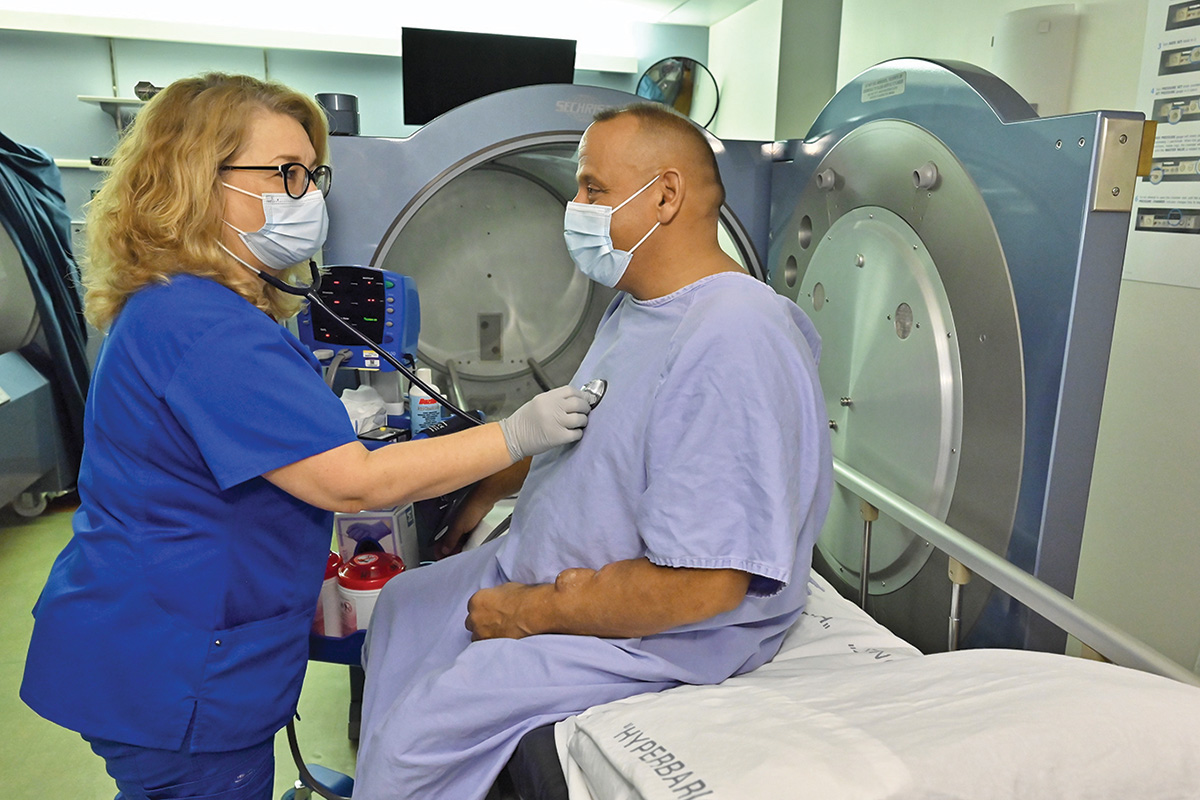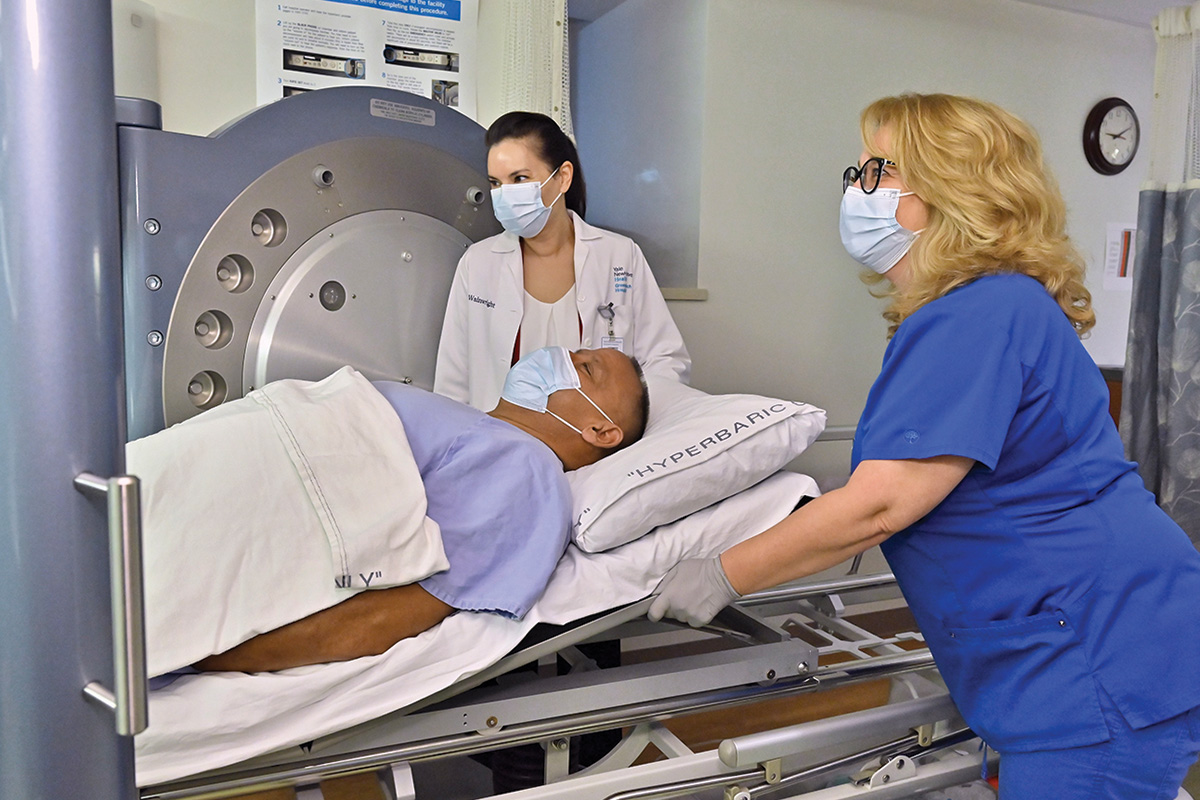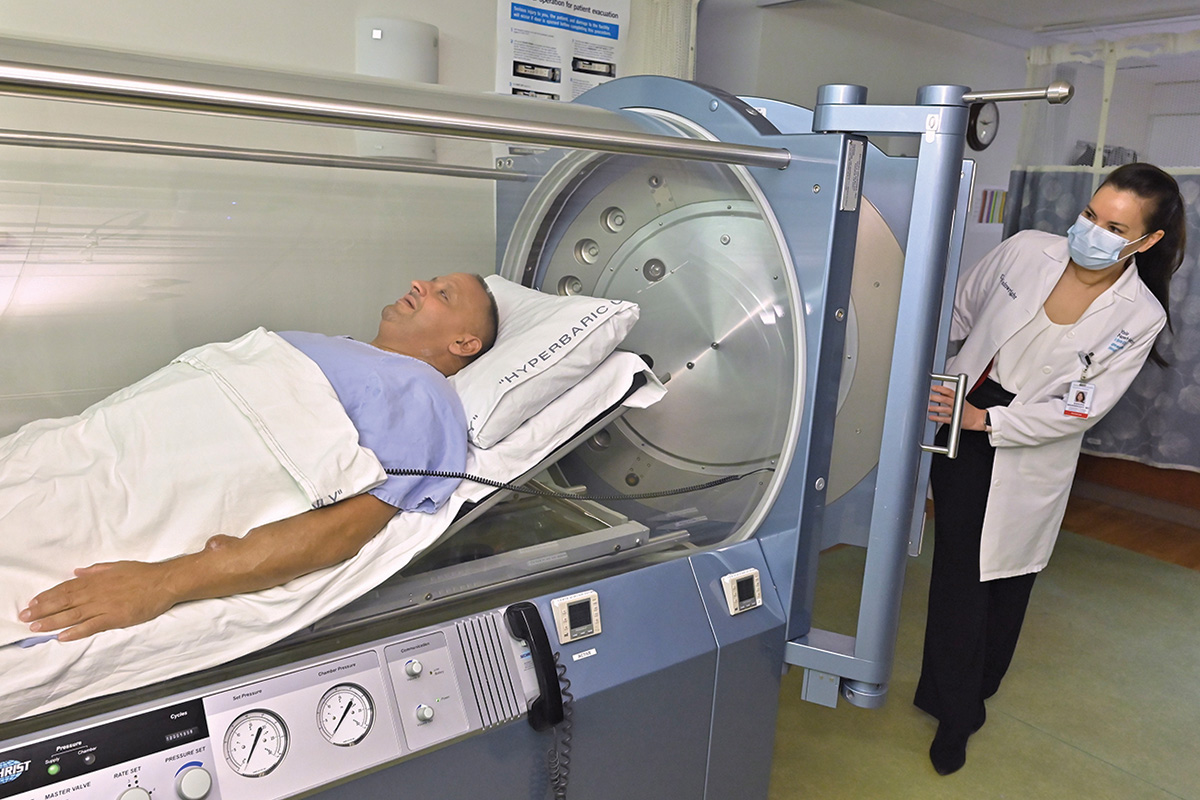Prevention Starts With Taking Action
Seeking medical attention at the first sign that a foot wound isn’t healing properly can help prevent a raging infection that leads to hospitalization and, in some cases, amputation.
That’s the message from Lady Paula DeJesus, DPM, a surgical podiatrist with Northeast Medical Group, part of Yale New Haven Health. Dr. DeJesus sees wound care patients at Greenwich Hospital’s Center for Hyperbaric Medicine and Wound Healing.
“Don’t be afraid to see a doctor. Even a small wound can become problematic if left untreated,” said Dr. DeJesus. “We are here to make sure the wound heals properly and offer patient education on how to avoid a recurrence.”
Many surgical amputations result from complications of medical conditions that affect blood flow, such as diabetes and peripheral artery disease (PAD). Without adequate blood flow, the body’s cells cannot get oxygen and nutrients from the bloodstream. As a result, the affected tissue begins to die, and infection may set in.
With poor blood circulation, people with diabetes may lose feeling in their feet, leaving them unaware that they have a troublesome wound. Dr. DeJesus encourages people with diabetes to have their feet routinely checked by a healthcare provider to identify wounds while they are small and easier to heal.
PAD involves the narrowing of the arteries in the lower extremities, which supply blood to the feet. Sameer Nagpal, MD, a Yale Medicine interventional cardiologist, said recognizing the signs of PAD can lead to early interventions such as angioplasty that can open clogged arteries. Symptoms include leg pain while walking or during activity that disappears after rest, and sores on the legs, feet and toes that do not heal. “It’s important to get evaluated because PAD is reversible,” he said.
Last, avoid the temptation to treat your wounds with the hyperbaric oxygen chambers sold online or featured in spas. “These soft-sided chambers don’t reach the atmospheric pressure that the manufacturers promote. They can be dangerous because there is always the potential for fire when you have oxygen,” said Sandra Wainwright, MD, medical director, Center for Hyperbaric Medicine and Wound Care.



